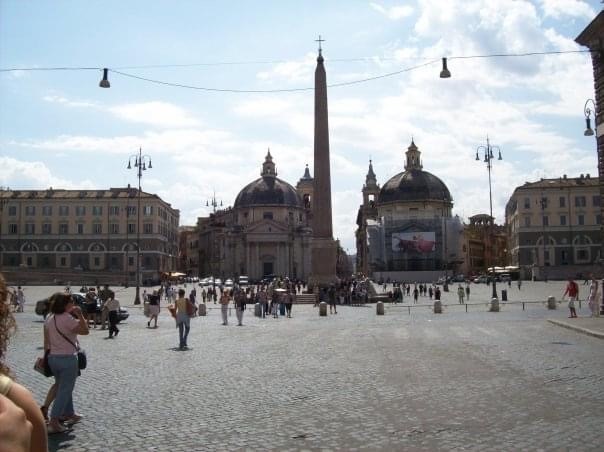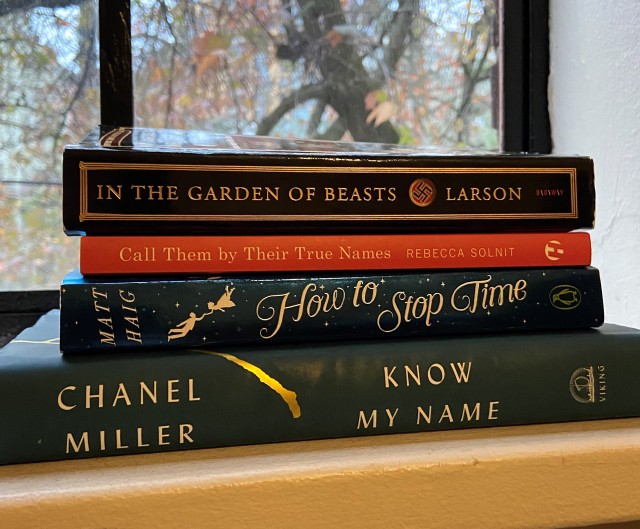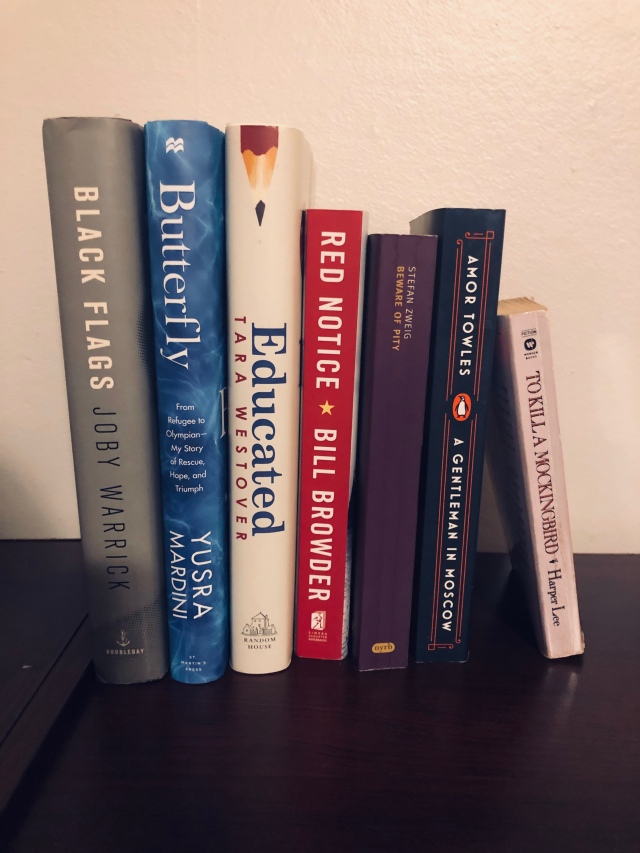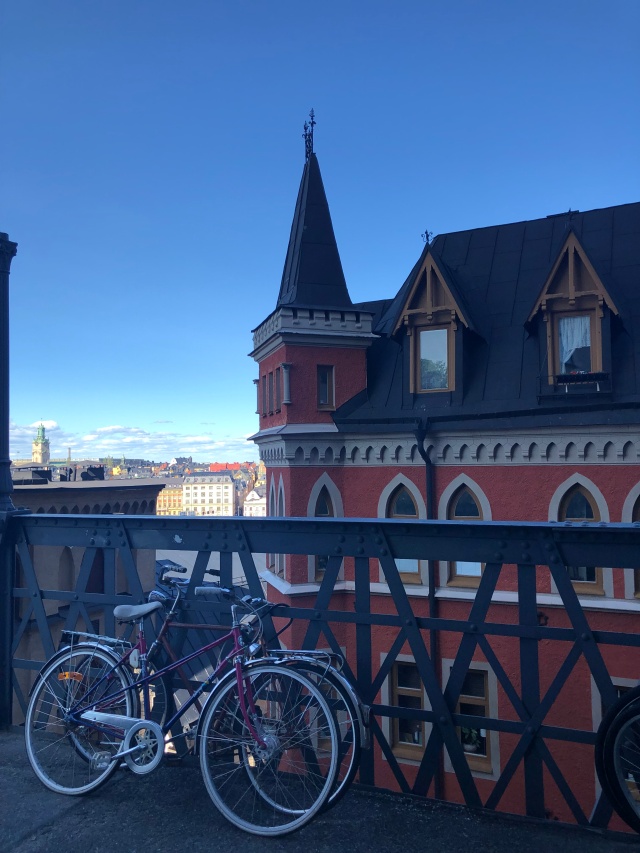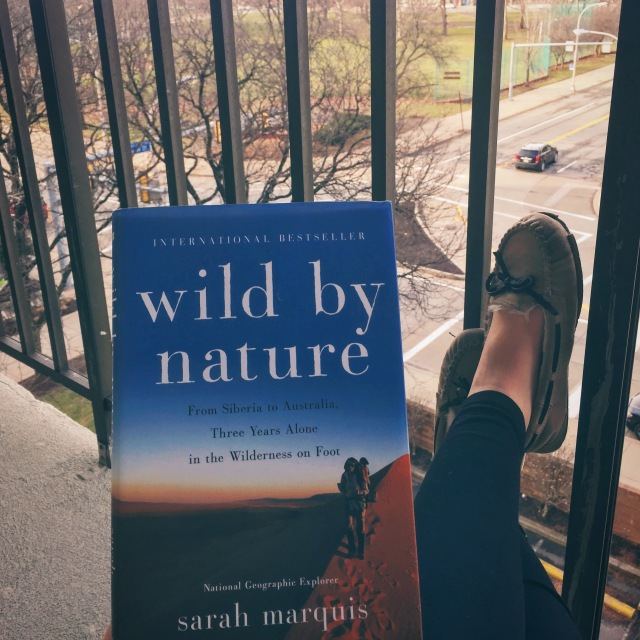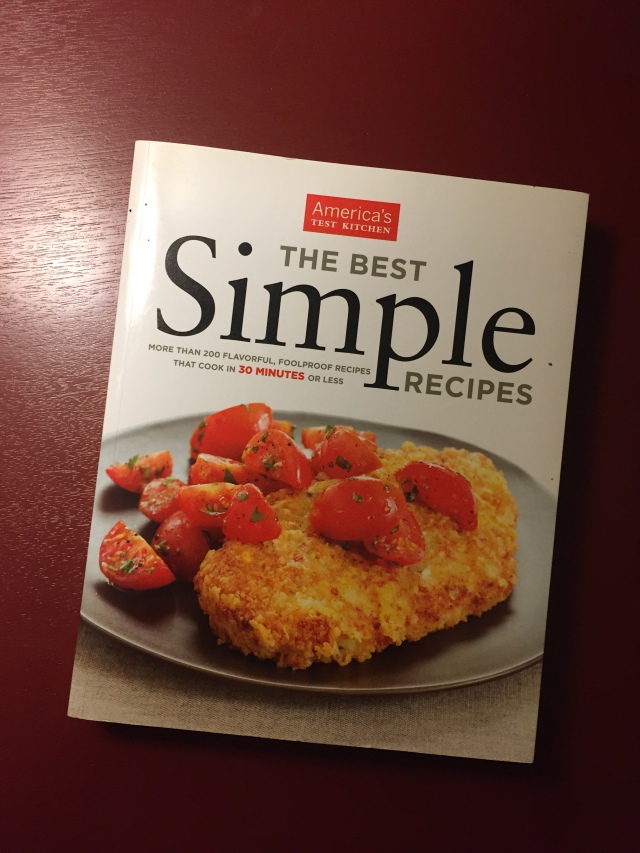
I’m not sure I’ve ever experienced two months quite like February and March of this year. The world has changed so quickly, and now it feels like my normal life has come to a stop. Finding my new normal has been a challenge, but I’m grateful because if managing a new routine is my worst problem then I’m a very lucky person. In the spirit of staying positive, one of the best things that has come of this for me is that I have much more time to spend reading, so here’s a breakdown of everything I’ve read since January.
The Red Daughter by John Burnham Schwartz
This is a fictionalized account of Svetlana Alliluyeva’s life. Stalin’s youngest child and only daughter, she defected to the US in 1967. This narrative covers her experiences as she tries to find her way in a new country while also trying to maintain a connection with her past and the children she left behind in the Soviet Union. Spanning decades, the novel follows her relationship with the lawyer who helped to navigate her initial escape. I enjoyed this novel but I didn’t love it; at times it felt like it dragged on. I also didn’t like the way Svetlana’s character was portrayed which made it hard to love.
From Russia With Blood by Heidi Blake
Another Russia focused book! This one was a riveting nonfiction read. It covered a series of state-ordered attacks on Russian enemies in foreign countries, focusing mainly on Great Britain. These murders were committed via stealthy poisons that made deaths look accidental or health related. Despite mounting evidence that showed Russia (and the Kremlin) was behind the attacks, the UK and US governments refused to acknowledge the deaths as murder which eventually led to their own civilians being potentially harmed. This was an eye-opening book on recent history and foreign politics; it was both thrilling and terrifying to read.
Patsy by Nicole Dennis-Benn
Patsy is a single mother in Jamaica who dreams of living in the United Sates. Led on and encouraged by her best childhood friend, she leaves behind her daughter to move to New York in hopes of a better life. Once there, she faces the cruel reality of life as an undocumented immigrant and the realization that her friendship isn’t what she imagined it would be. The novel follows both Patsy and her daughter as they grapple with her decision and the impact it has on both of their lives. I enjoyed this novel, but I did feel that there were some side plots that weren’t fully explored. These plots took time away from the main story, and I would have preferred to explore the main story in more depth.
The Starless Sea by Erin Morgenstern
I’ve had this book on hold from the library since its publication date in November and I was happy to finally get a chance to read it. Many of my bookish friends were disappointed with this one, so I went into it expecting it to be subpar. I’m not sure if we just have different tastes or if having low expectations allowed me to enjoy it more, but I liked this book. There were many different storylines and characters to keep track of, which sometimes was hard to do, but I liked the mystery of piecing everything together. It was a fantasy novel set in a world of books, what could be better?
The Moment of Lift by Melinda Gates
“Our call is to lift women up – and when we come together in this cause, we are the lift.” In this book, Melinda Gates shares the lessons and stories she’s learned from people around the world whom she’s met as part of her work with the Bill & Melinda Gates Foundation. In an effort to find solutions for the world’s most vulnerable populations, Melinda (and the foundation) began to see that empowering women is the key to improving societies and has the power to change the world. She shares data and statistics alongside inspiring and heartbreaking stories, and even includes details from her personal experiences as a woman, wife, and mother. While some of the stories were devastating to read, the overall message of empowerment carried through. This book opened my eyes in some ways and broadened my understanding in other areas. It was both an uplifting take on how far we’ve come but also a stark reality on how far we still have to go.
The Count of Monte Cristo by Alexandre Dumas
Sometime during the past few years I’ve realized that I haven’t read much classic literature. AP English could only cover so much, and I was a business major in university so there’s a lot of recommended reading that I’ve missed out on. In an effort to correct that I’ve tried to include a few classics in my yearly book lists, and The Count of Monte Cristo was the most recent. In my last post I shared more details about how much I loved this novel, so here I’ll just say it was one of the best things I’ve read in a long time.
Next up…
I’m so excited about the books I have coming up in my to-read pile! Travel might be impossible due to current events but books will be taking me to Spain, Chile, Costa Rica, Russia, and different regions in the US. I can’t wait to share more details!



